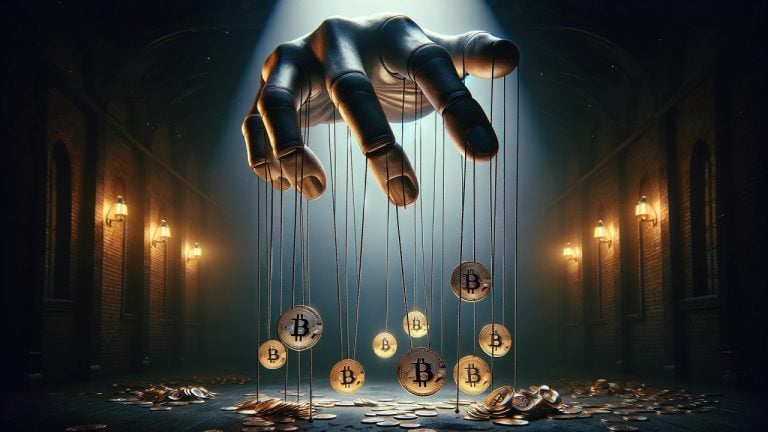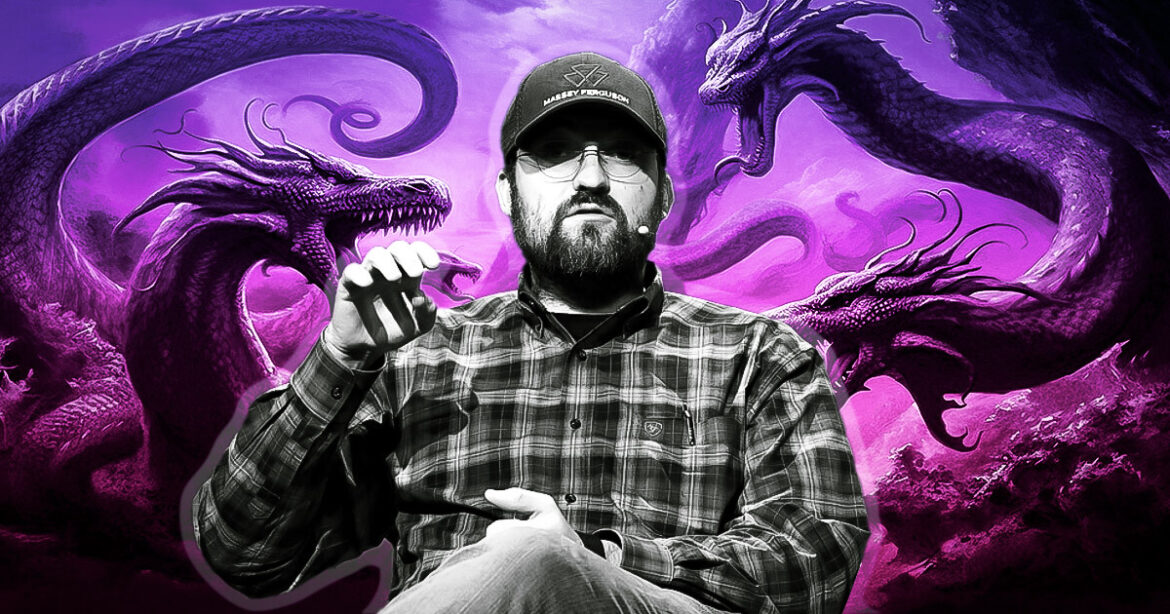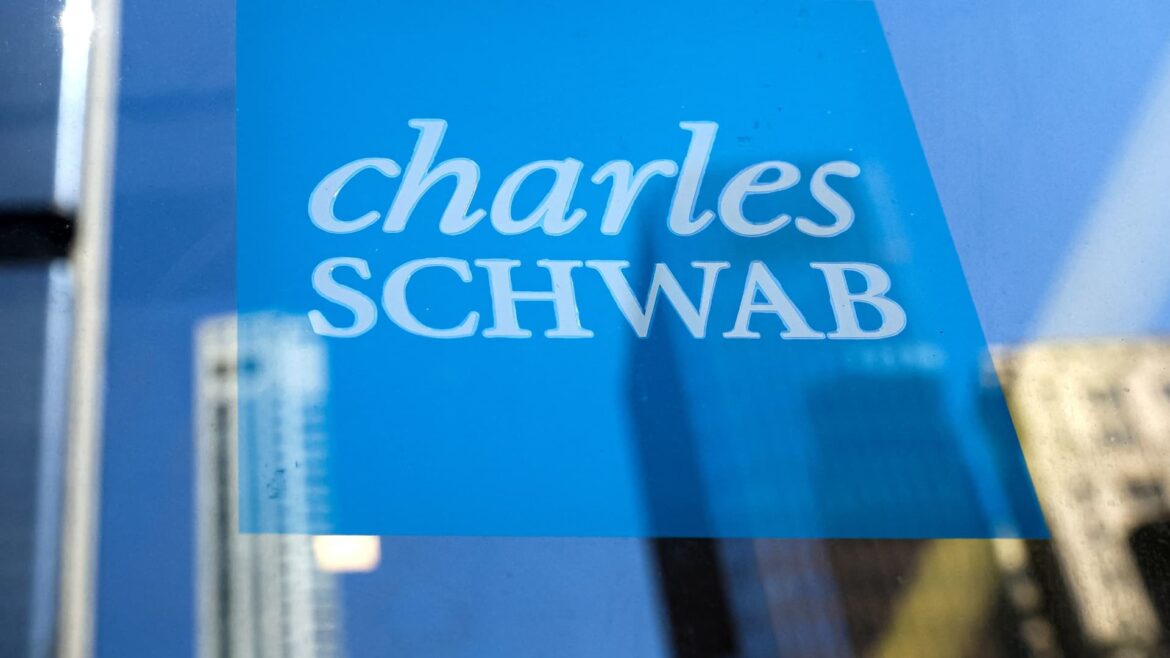 In a video address, Charles Hoskinson casts a spotlight on the advance of traditional financial mechanisms into the realm of cryptocurrency, warning that the essence of digital currencies is at stake. Charles Hoskinson Warns of Crypto’s Creeping Centralization In a recent video titled “Legacy is Eating Crypto,” Charles Hoskinson, the co-founder of Ethereum and Cardano, […]
In a video address, Charles Hoskinson casts a spotlight on the advance of traditional financial mechanisms into the realm of cryptocurrency, warning that the essence of digital currencies is at stake. Charles Hoskinson Warns of Crypto’s Creeping Centralization In a recent video titled “Legacy is Eating Crypto,” Charles Hoskinson, the co-founder of Ethereum and Cardano, […]
Source link
Charles
Binance CEO CZ’s downfall is ‘the end of an era’ — Charles Hoskinson

In a Nov. 22 YouTube video, Cardano founder Charles Hoskinson reflected on the news that Binance CEO Changpeng “CZ” Zhao had stepped down from the exchange. Hoskinson claimed that the event represented “the end of an era.” He argued that entrepreneurs will need to comply with regulations or else develop completely permissionless protocols that can’t be regulated.
The End of an Era https://t.co/d3AcHWu66C
— Charles Hoskinson (@IOHK_Charles) November 22, 2023
In the video, Hoskinson claimed that CZ was “part of a class of entrepreneurs in the cryptocurrency space who really epitomized the move fast, grow and innovate side of things.” In the early days of crypto, Bitcoin (BTC) traders used spreadsheets to make trades and sent funds to buy the cryptocurrency via PayPal, Hoskinson said. This period represented the “first wave” of innovation in the space. CZ and Binance came in the “second wave” in 2017 and became a “Leviathan in our industry.”
“He [CZ] was one of the greatest entrepreneurs of our time,” Hoskinson stated, adding that “trillions of dollars of assets flowed through his exchange.”
However, Hoskinson warned that the world is changing and that entrepreneurs will no longer be able to get by using centralized systems while simultaneously not complying with regulations. This is because “the United States has a financial regime that basically has been weaponized,” and this regime will not allow entrepreneurs to open up markets that let “the enemies of America to basically trade and do things.” Hoskinson claimed that the world is becoming “multipolar,” leading many countries to reject this U.S.-led system. In his view, this is leaving crypto “caught in the middle,” resulting in incidents like the Binance plea deal.
Related: Sam Bankman-Fried just like Bernie Madoff, Cardano founder says
He suggested that the U.S. government will likely continue its efforts to regulate crypto services, including eventually “hitting” or trying to put restrictions on external wallets. However, he also claimed that innovators “still have a lot of power” that can be used to foster freedom while also allaying some of the concerns of regulators. Hoskinson suggested that Midnight, a network aimed at facilitating transactions based on algorithmic law, may provide part of the solution to the problem of government regulation of crypto.
On Nov. 21, the U.S. Justice Department announced that CZ and Binance had agreed to a plea deal connected to criminal charges of violating the U.S. Bank Secrecy Act. On the same day, CZ announced that he was stepping down as CEO of the exchange, and he posted a bond of $15 million to a United States district court to be released from custody. CZ’s sentencing hearing is scheduled for Feb. 23, 2024. Hoskinson referred to CZ as “a friend” and “a good man” in the video.

Ripple chief technology officer David Schwartz has countered the Cardano founder’s comments about possible motives behind the United States regulators’ determination that Ether (ETH) is not a security.
Cardano founder Charles Hoskinson addressed the much-debated ETHgate theory in an AMA session on Oct. 8, arguing that the government’s actions were not about corruption.
ETHgate is a conspiracy theory alleging that Ethereum received a free pass from U.S. regulators, particularly the U.S. Securities and Exchange Commission (SEC), which has been reiterating its stance that ETH isn’t a security for years.
Despite SEC director William Hinman defining Ether as not a security in 2018, U.S. regulators have been struggling to establish the status of other coins, including XRP (XRP), which has created significant impediments to their adoption.
According to Hoskinson, Hinman’s speech drafts on the regulatory status of Ethereum — which were released in June 2023 — do not prove corruption but favoritism.
“None of that activity presupposes corruption, just favoritism,” Hoskinson argued in the AMA, adding that “this is how the internet works, and it can’t be fixed now.”
The Cardano founder emphasized that there has been no evidence proving anything apart from favoritism by the SEC. “What evidence do you have of that? Where are the emails? Where are the meetings?” Hoskinson asked. He also argued that XRP serves different customers, doesn’t even have smart contracts and has an entirely different business model. He added:
“Doesn’t that dilute your entire goal of making Ethereum not a security to also do that? Are you so scared of XRP that’s going to happen? You really believe that? If you do, you’re a crazy person in my book.”
Hoskinson’s fresh ETHgate-related remarks have quickly triggered a response from the XRP community, particularly executives like XRP chief technology Schwartz. The XRP community specifically clashed with Hoskinson over the definition of corruption.
“I would argue that a government actor showing favoritism aligned with the personal interests of themselves and their friends is corruption,” Schwartz wrote on X (formerly Twitter) on Oct. 12.
“So saying word ‘corruption’ in much polite way is ‘favoritism’,” one commenter stated on X.
Related: Sam Bankman-Fried just like Bernie Madoff, Cardano founder says
Some community members also alleged that Hoskinson’s questions about ETHgate evidence might be related to the fact that he allegedly has a lot to hide about his early days in Ethereum.
Apart from his role at Cardano, Hoskinson is also one of the eight Ethereum co-founders alongside Vitalik Buterin and even briefly held the position of Ethereum’s CEO between 2013 and 2014. Following a public fall-out between the co-founders, Hoskinson left Ethereum in 2014 to subsequently launch Cardano.
Magazine: Blockchain detectives — Mt. Gox collapse saw birth of Chainalysis
Cardano (ADA) co-founder Charles Hoskinson has refuted claims that Hydra, the layer 2 scaling solution for the Cardano blockchain, has been unsuccessful.
In an Oct. 5 video on social media platform X (formerly Twitter), Hoskinson revealed how Hydra has pivoted during the last three years and that measuring the network’s activity by transactions per second (TPS) alone might be misleading.
According to him, a single Cardano transaction can encompass multiple outputs, citing one instance where a block contained 384 outputs in just one transaction. He said:
“Cardano is not a TPS system. It’s a transaction-per-transaction system, and each of these outputs can signify more intricate elements such as scripts and proofs, beyond mere raw value transfers.”
Hoskinson further elaborated that Hydra has developed middleware for developers to build incorporates applications (dApps) for the blockchain network chain. This, Hoskinson explained, aligns with Cardano’s broader plan of supporting on-chain and off-chain applications like NFTs and decentralized exchanges (DEXs).
He said:
“So what happened over a three-year period is that Hydra pivoted a little bit and it pivoted into, let’s build some middleware that is going to be really easy for you as a developer to plug into your application work with Plutus to help get a lot of that complex logic that should not run on the main network but run it in a different network.”
Cardano DeFi TVL rises
Despite recent concerns, decentralized finance (DeFi) activity on Cardano continues to thrive.
According to data from DeFiLlama, the total value of assets locked (TVL) on Cardano has surged by over $10 million this month to $162.1 million as of press time. This growth mirrors the uptrend in DeFi activity on the network throughout the year as more traders embrace decentralized applications built on the blockchain.
It’s worth noting that the current TVL is still significantly below the all-time high of $326 million achieved last year.
The post Charles Hoskinson defends Hydra as Cardano DeFi thrives appeared first on CryptoSlate.
BlackRock ETF will be ‘big rubber yes stamp’ for Bitcoin — Charles Edwards
Bitcoin (BTC) stands to win big thanks to the BlackRock exchange-traded fund (ETF), investor and analyst Charles Edwards believes.
In his latest interview with Cointelegraph, Edwards, who is founder of quantitative Bitcoin and digital asset fund Capriole Investments, goes deep into the current state of BTC price action.
With his previous bullish statements continuing to stand the test of time, and after an eventful few months, Edwards does not see the need to alter the long-term perspective.
Bitcoin, he argues, may be less of a sure bet on shorter timeframes, but the overarching narrative of crypto becoming a recognized global asset class undoubtedly remains.
Cointelegraph (CT): When we last spoke in February, Bitcoin price was around $25,000. BTC is not only 20% higher today, but Bitcoin’s NVT ratio is also at its highest levels in a decade. Does this suggest more upside?
Charles Edwards (CE): NVT is currently trading at a normal level. At 202, it is trading in the middle of the dynamic range band, well below the 2021 highs. Given its normalized reading today, it doesn’t tell us much; just that Bitcoin is fairly valued according to this metric alone.

CT: At the time, you described Bitcoin as being in a “new regime” but forecast up to 12 months’ upward grind to come. How has your thinking evolved since?
CE: That thinking mostly remains today. Bitcoin has steadily grinded up about 30% since February. The difference today is that the relative value opportunity is slightly less as a result, and we are now trading into major price resistance at $32,000, which represents the bottom of the 2021 bull market range and confluence with major weekly and monthly order blocks.
My outlook today over the short term is mixed, with a bias towards cash until one of three things occurs:
- Price clears $32,000 on daily/weekly timeframes, or
- Price mean-reverts to the mid-$20,000s, or
- On-chain fundamentals return to a regime of growth.
CT: At $30,000, miners have begun to send BTC to exchanges en masse at levels rarely seen. Poolin, in particular, has moved a record amount in recent weeks. To what extent will miners’ purported selling impact price moving forward?
CE: It’s true that relative Bitcoin miner sell pressure has stepped up. We can see that in the two below on-chain metrics; Miner Sell Pressure and Hash Ribbons. Bitcoin’s hash rate is up 50% since January — that’s over 100% annualized growth rate.
This rapid rate of growth is not sustainable long term. Hence we can expect any slowdown will trigger the typical Hash Ribbon capitulation. This rapid growth in hash rate also can only mean one thing; an extraordinary amount of new mining rigs have joined the network.
It’s 50% harder to mine Bitcoin, there’s 50% more competition and as a result 33% less relative BTC revenue for miners.
Through 2022 there were delays and backlogs in global mining hardware shipping for many months; we likely have seen that backlog flush out in the first half of the year with the large hash rate uptick. New mining hardware is costly, so it makes sense that miners would want to sell a bit more at relatively higher prices today to help cover operational costs and take advantage of the 100% price rally we have seen in the last 7 months.
Miners are large Bitcoin stakeholders so if they are selling at a rapid rate it can impact prices. Though given their relative share of the network is diminishing, that risk factor is not what it once was.

CT: When it comes to U.S. macro policy, how do you see the Fed approaching inflation for the second half of the year? Are further hikes coming past July?
CE: The market is pricing in a 91% chance of rate hikes through the rest of this year. There’s a 99.8% chance that the Fed will raise rates at next week’s meeting, according to the CME Group FedWatch Tool. So it’s probable we see one or two more rate hikes in 2023. That seems quite excessive given inflation (CPI) has consistently been trending down since April 2022, and is now well below the Fed funds rate of 5%.
Of course things could change quite a bit over the next months, but if we take two more rate hikes as the base case, my expectation that any net change in the Fed’s plan would be toward a pause. We’ve already seen the considerable stress building in the banking system, with multiple bank collapses just a couple of months ago. 2023 was the biggest banking failure of all time in dollar value; more than 2008, so things could change considerably over the next six months.
Regardless, the Fed has implemented the vast majority of its rate hike plan. 90% of the tightening is complete. It’s now a game of wait and see — will inflation continue to decline as anticipated? And will that occur before or after the economy takes a turn?

CT: Bitcoin’s correlation with risk assets and inverse correlation with U.S. dollar strength has been declining of late. What’s the reason for this? Is this part of a longer-term trend?
CE: Bitcoin has historically spent most of its life “uncorrelated” with risk markets, oscillating from periods of positive to negative correlation. Correlation comes in waves. The last cycle happened to see a very strong correlation with risk assets. This began with the Corona crash on March 12, 2020. When fear peaks, all markets go risk-off (into cash) in unison, and we saw a huge spike in correlations across asset classes as a result.
Following that crash, a wall of money entered risk markets from the biggest QE of all time. In that regard, the following year was “all one trade” — up and to the right for risk. Then in 2022 we saw the unwinding of all risk assets as bonds repriced following the most aggressive Fed rate hike regime in history.
So it’s been unusual times. But there is no intrinsic need for Bitcoin to have a high correlation to risk assets. It is likely with time that as Bitcoin becomes a multi-trillion-dollar asset, it will be more interconnected with major asset classes and so expect to see a more consistent positive correlation with gold over the next decade, which has a highly negative correlation with the dollar.

CT: How do you think U.S. regulatory pressure will impact Bitcoin and crypto markets going forward? Do you think Binance and Coinbase were the tip of the iceberg?
CE: Impossible to say for sure, but I believe the regulatory fears of early 2023 have been well overblown. Bitcoin was long ago classified as a commodity, and from a regulatory perspective is in the clear. There’s definitely question marks on various altcoins, but the legal outcome of XRP being deemed not a security was definitely an interesting turn of events this month.
Finally, it’s pretty clear that industry and government — where it matters — is in support of this asset class and knows it’s here to stay.
BlackRock ETFs have a 99.8% success rate and its announcement to launch a Bitcoin ETF was essentially a regulatory and financial industry green light.
We’ve seen half a dozen other leading-tier financial institutions follow suit and, of course, now presidential candidate Kennedy is talking about backing the dollar with Bitcoin. This asset class is here to stay. There will be bumps and hiccups along the way, but the direction is clear to me.
CT: How do you foresee progress of the BlackRock spot ETF and its effect on Bitcoin should it launch?
CE: The BlackRock ETF approval will be huge for the industry.
Related: Bitcoin traders say ‘get ready’ as BTC price preps 2023 bull market
BlackRock is the biggest asset manager in the world, and its (and regulatory) seal of approval will allow a new wave of capital to flow into the market. Many institutions sat on the sidelines last year due to concerns and uncertainty regarding crypto regulation. ETF approval will be a big rubber “yes” stamp for Bitcoin.
ETFs also arguably make it easier for institutions to put Bitcoin on their balance sheet, as they don’t need to worry about custody or even entering the crypto space. So it opens a lot of doors. The best comparable we have for this event is the gold ETF launch in 2004. Interestingly it launched when gold was down 50% (much like Bitcoin is today). What followed was a massive +350% return, seven-year bull run.
Essentially the Bitcoin ETF is just another goalpost on the pathway to broad regulatory acceptance and establishment of Bitcoin as a serious asset class. And it has big implications.

Magazine: Should you ‘orange pill’ children? The case for Bitcoin kids books
This article does not contain investment advice or recommendations. Every investment and trading move involves risk, and readers should conduct their own research when making a decision.
Charles Schwab Corp. is the largest publicly traded brokerage business in the United States with $7.5 trillion of client assets, and is a leading service provider for financial advisors, among the top exchange-traded fund asset managers and one of the biggest banks.
“It would be fair to characterize Charles Schwab as a financial services supermarket,” Michael Wong, director of North American equity research and financial services at Morningstar, told CNBC. “Anything that you want, you can find in Charles Schwab’s platform.”
Over the decades, Charles Schwab helped usher in a low-cost investing revolution while surviving market crashes and fierce competition — even when the game was taken up a notch to zero-fee commissions in 2019.
“Inherently, this is a scale business. The larger you are, the more efficient you are from an expense perspective,” Alex Fitch, portfolio manager for the Oakmark Select Fund and the Oakmark Equity and Income Fund, which invests in Charles Schwab, told CNBC. “It enables you to cut prices.”
Various facets of Charles Schwab’s business compete against many legacy full-service brokers and investment bankers, including Fidelity, Edward Jones, Interactive Brokers, Stifel, JPMorgan, Morgan Stanley and UBS. And, it has to battle in the financial tech market against companies like Robinhood, Ally Financial and SoFi.
The melee reached a turning point in 2019 when Charles Schwab announced it was slashing commissions for stock, ETF and options trades to zero, matching the fees offered by Robinhood when it entered the market in 2014.
Quickly, other companies followed suit and cut fees, which damaged TD Ameritrade’s business enough that Charles Schwab ended up acquiring it in a $26 billion all-stock deal less two months later.
Charles Schwab was among the firms that benefited from the growth of retail investing during the coronavirus pandemic, and it’s now facing the consequences of Federal Reserve’s aggressive interest rate hikes.
That’s because of Charles Schwab’s huge banking business that generates revenue from sweep accounts, which are when the firm uses money leftover in investors’ portfolios and reinvests it in securities, like government bonds, to help turn a profit.
Charles Schwab told CNBC it was unable to participate in this documentary.
Watch the video above to learn more about how Charles Schwab battled the ever-evolving financial services market – from fees to fintech – and how the reward doesn’t come without the risk.






